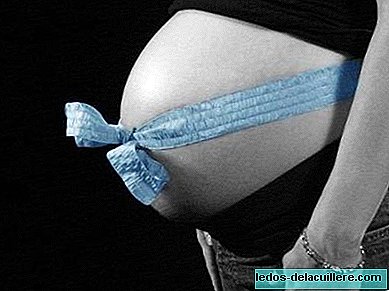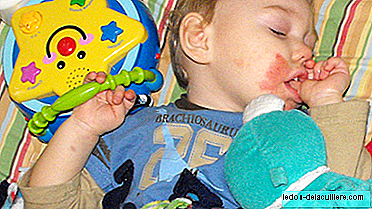
The umbilical cord is an indispensable organ for the survival of the fetus. It connects the baby with the placenta and is responsible for providing oxygen and the necessary nutrients so that it can develop properly.
While they are rare, there may be some umbilical cord complications in pregnancy, although most of them are detected only at the time of delivery.
The umbilical cord is a narrow helical tube that usually measures between 50 and 60 centimeters in length.
Three blood vessels pass through it: a vein that conducts oxygen and nutrients from the maternal blood and two arteries that come from the baby and transport the waste that is transferred to the mother's blood and then removed.
During pregnancy they may appear complications associated with the umbilical cord, for example:
Cord prolapse
It occurs when once the water bag has broken, the umbilical cord protrudes through the cervix before the baby's head. It is rare to occur (a case among a thousand), but it poses a serious risk.
The pressure of the head on the cord could compress it by interrupting the flow of oxygen the baby receives. When there is cord prolapse It is necessary to perform an emergency caesarean section to prevent the baby from being injured due to lack of blood.
There may also be a prolapse of the cord with the bag intact when the cord is in front of the head of the fetus but does not appear through the vagina. On the other hand, it is called hidden cord prolapse when it is not ahead, but next to the presentation of the baby.
The prolapse can occur whether the baby is placed on the buttocks or in a cephalic presentation, but this is the most dangerous because the pressure exerted by the head on the pelvis tends to be more intense.
Among the factors that predispose to cord prolapse are: prematurity and low weight, twin pregnancies, alteration in the presentation of the baby or alterations of the maternal pelvis.
Single artery cord
This alteration happens when instead of two arteries that leave the fetus, a single artery develops. Its incidence is less than 1 percent.
Unlike other cord complications, it is usually detected early and most often associated with major malformations in the fetus (cardiac or renal) or minor changes such as low baby weight or premature births.
Alterations of the length of the cord
As we have said before, the cord is between 50 and 60 centimeters, however, sometimes it can be shorter or longer, which usually causes complications.
A very short umbilical cord, less than 30 centimeters may complicate the baby down the birth canal at the time of delivery.
On the other hand, a very long cord, more than 60 centimeters, is not related to alterations, but due to its length the likelihood of knots forming or wrapping around different parts of the baby's body increases, producing fetal distress during or before of labor.

Cord knot formation
The very nature of the cord makes it almost impossible for knots to form, preventing the passage of blood and oxygen to the fetus. It is covered by a gelatinous substance that gives it flexibility and elasticity preventing it from breaking or forming knots.
However, the baby's movements and somersaults inside the uterus, especially during the first months, can cause knots in the umbilical cord to form.
Most of the time they are false knots, that is, minor structure alterations, but sometimes they are real knots which can be adjusted as pregnancy progresses and cause a deficit of nutrients and oxygen in the fetus.
The doctor will evaluate in these cases if it is feasible to try vaginal delivery or to perform a C-section.
Laces of cord (or circular cord)
The cord is long enough to wrap around the neck or body of the baby.
It is one of the most frequent concerns, but often unfounded, since approximately 20 to 40 percent of babies are born with a twist, and even two, and it is solved with a very simple maneuver.
The finger is placed between the neck and the cord to undo the circular while the child leaves. My oldest daughter is very flirtatious and was born with the “necklace” cord, something that was solved at the time and a simple anecdote of the birth was left.
It doesn't usually matter unless the turn of the cord is so tight (the cases are minimal and it is very rare) to compress the cord in a way that prevents the passage of blood and oxygen.
The doctor will assess the situation and in the case of having fetal suffering will evaluate how to continue with the delivery.












